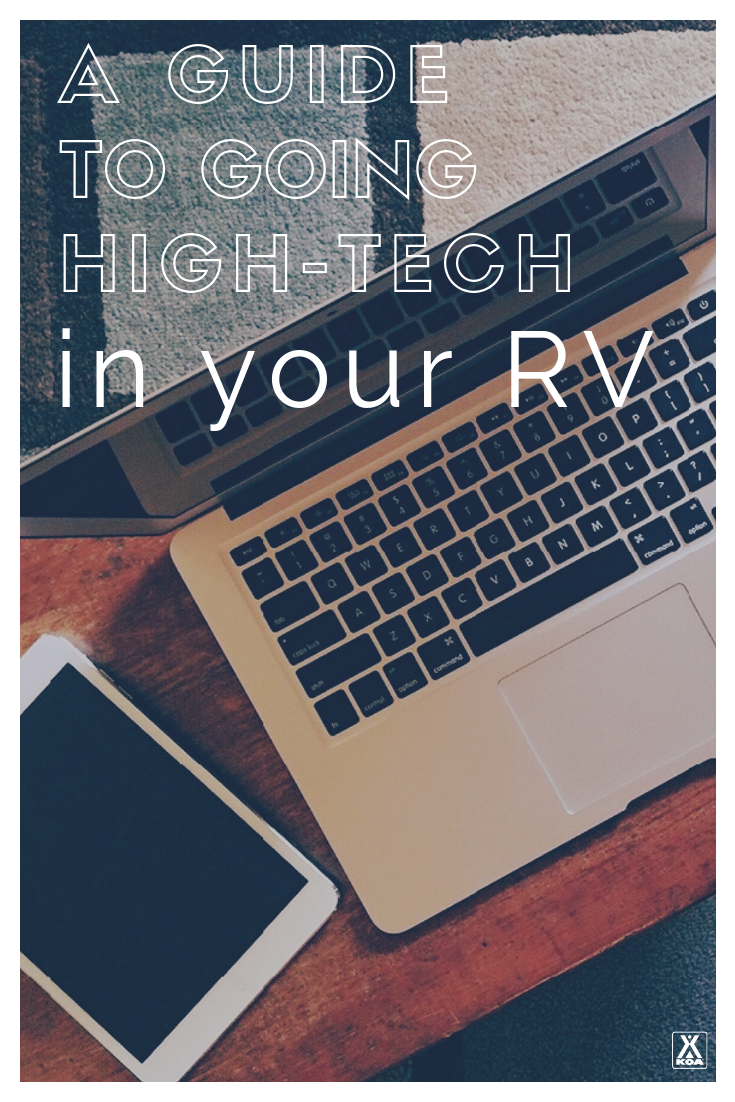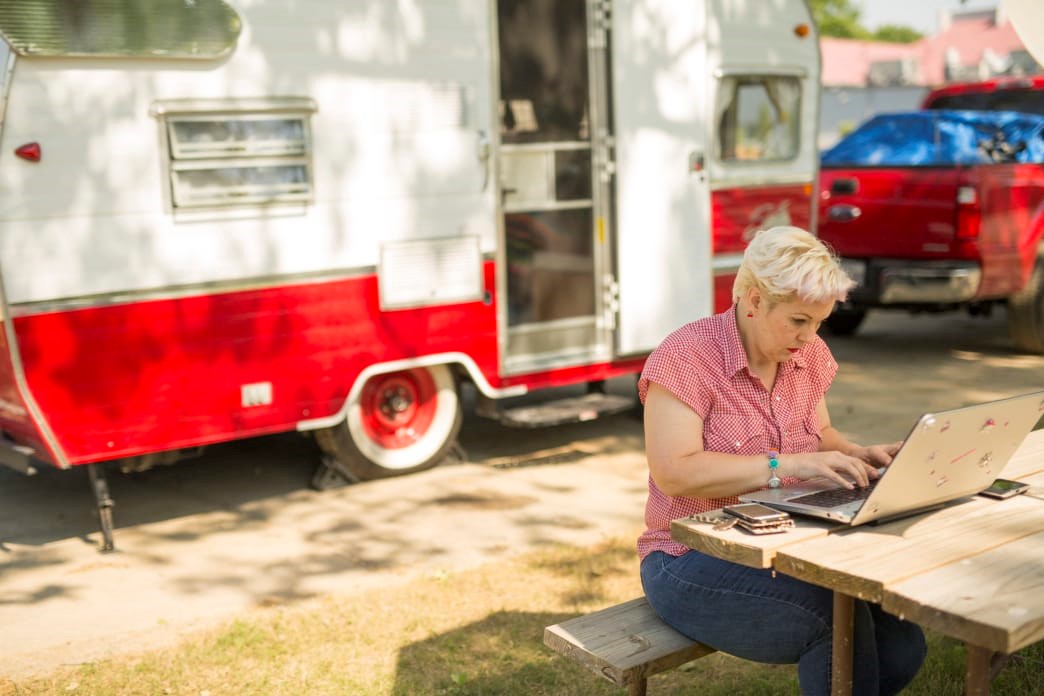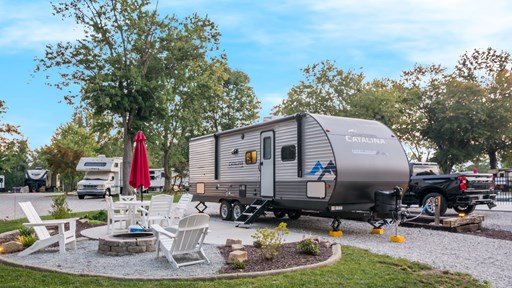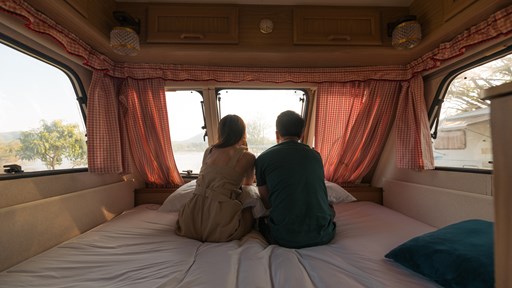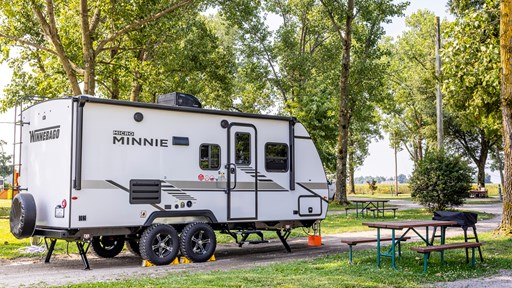RV travel is big business in the United States: According to a recent study conducted by the Coleman Company and the Outdoor Foundation, nearly 15 million outdoor aficionados camped in an RV in 2017. And as more millennials get into RV camping and opt for life on the road—and as baby boomers trade their cubicles for a new rig—those numbers stand to increase dramatically in coming years.
With a new generation of RV campers comes a new generation of RV technology. Whether you want to kick back with your favorite movie, have a campsite dance party, or live a location-independent lifestyle, chances are good there’s a high-tech tool to help you make the most of life on the road. Here are six ideas for incorporating technology into your next RV camping trip.
1. Upgrade Your Sound System
The party doesn’t have to stop just because it’s raining or you’re stepping out to start a campfire. Thanks to advances in portable technology, sound systems now come in a variety of styles to suit your unique needs.
For those fall and winter evenings spent indoors, consider a Bluetooth system that connects to your mobile device and plays music wherever you see fit to install the speakers. Some systems even include miniature soundbars for true audiophiles.
For spring and summer nights around the campfire, consider an exterior sound system. You may have to do a little cutting and drilling yourself, but even the smallest of speakers can have a significant impact–and waterproof models mean never you’ll never worry about rain showers again.
2. Install Eyes in the Back of Your Head
There’s nothing more nerve-wracking than backing your rig into a campsite. Fortunately, rearview cameras can help. More manufacturers are making rearview cameras a standard feature–and not a moment too soon–but add-on systems are becoming more common. Basic kits usually include a backup camera with wide viewing angles, infrared lights for seeing in the dark, and a high-quality wireless display.
When choosing a camera system, keep an eye out for weather-resistant features, viewing angles (the wider, the better), and the relative sensitivity of sensors, which can alert you to curbs, picnic tables, and other obstacles.
3. Go Green With Solar Energy

Steve Swayne
There’s nothing worse than sitting around a campfire on a starry night, listening to coyotes howl and owls hoot—only for the silence to be broken up by your neighbor’s generator. Do your part to cut down on noise (and help the environment, while you’re at it) by installing solar panels on the roof of your rig. You can buy components individually or as part of an all-in-one kit, and installation usually takes a couple of hours.
Once they’re up and running, solar panels are generally ideal for charging portable electronics, keeping lights powered, and running other high-tech gadgets. Best of all, that energy won’t cost a dime.
4. Get Connected With a Cell Signal Booster
We understand: Getting into nature is about getting away from it all, and that usually includes your cell phone. But there are times when you need to be connected, whether for work, safety, or driving directions. So no matter where you go, keep those bars on your phone or tablet with a cell phone signal booster.
Several RV-specific models are designed for travelers on the go. These portable kits generally include antennae for inside and outside the rig, as well as a signal amplifier to improve your connection within a given service area. Note that some models can only be used while moving; others can be used only when parked; and some work in both environments. Make sure your chosen model meets your needs before committing.
5. Stay Connected With a Wi-Fi Signal Booster
More and more RV parks offer Wi-Fi service, and some internet service providers promise mobile hotspots around the world. So whether you’re a digital nomad on deadline or you’re looking to stream the latest season of “Stranger Things,” consider a Wi-Fi signal booster for enhanced connectivity.
Wi-Fi signal boosters capture an existing signal and rebroadcast it in your service area, promising stronger, more reliable connections and faster data transfers. These portable boosters usually include an external router and an antenna that can be pointed wherever the signal originates. Higher-end models typically include options for monitoring your data usage, which can be helpful to avoid overage charges or data caps.
6. Install–or Upgrade–Your TV

RVs have come a long way in recent years, but there’s one key area where manufacturers remain stubbornly behind the times: television. TV prices have fallen dramatically in recent years, so it’s never been easier to outfit your RV with a high-quality, flat-screen display–inside or out. When choosing the right display for your RV, you’ll want to make sure it’s compatible with your RV’s power type, that it’ll fit your desired space, and that it can withstand the moving, bumping, shaking, and jostling that comes with constant travel.
You’ll also want to consider a mount to keep your TV in place. As with home TVs, these range from stationary wall brackets to portable mounts that allow various degrees of movement. Some exceptionally durable models are even designed for outdoor use. If you’re going to spend your Saturday watching college football with a crowd, it makes sense to get the most out of the experience.
Written by Matt Wastradowski for RootsRated Media in partnership with Kampgrounds of America.
